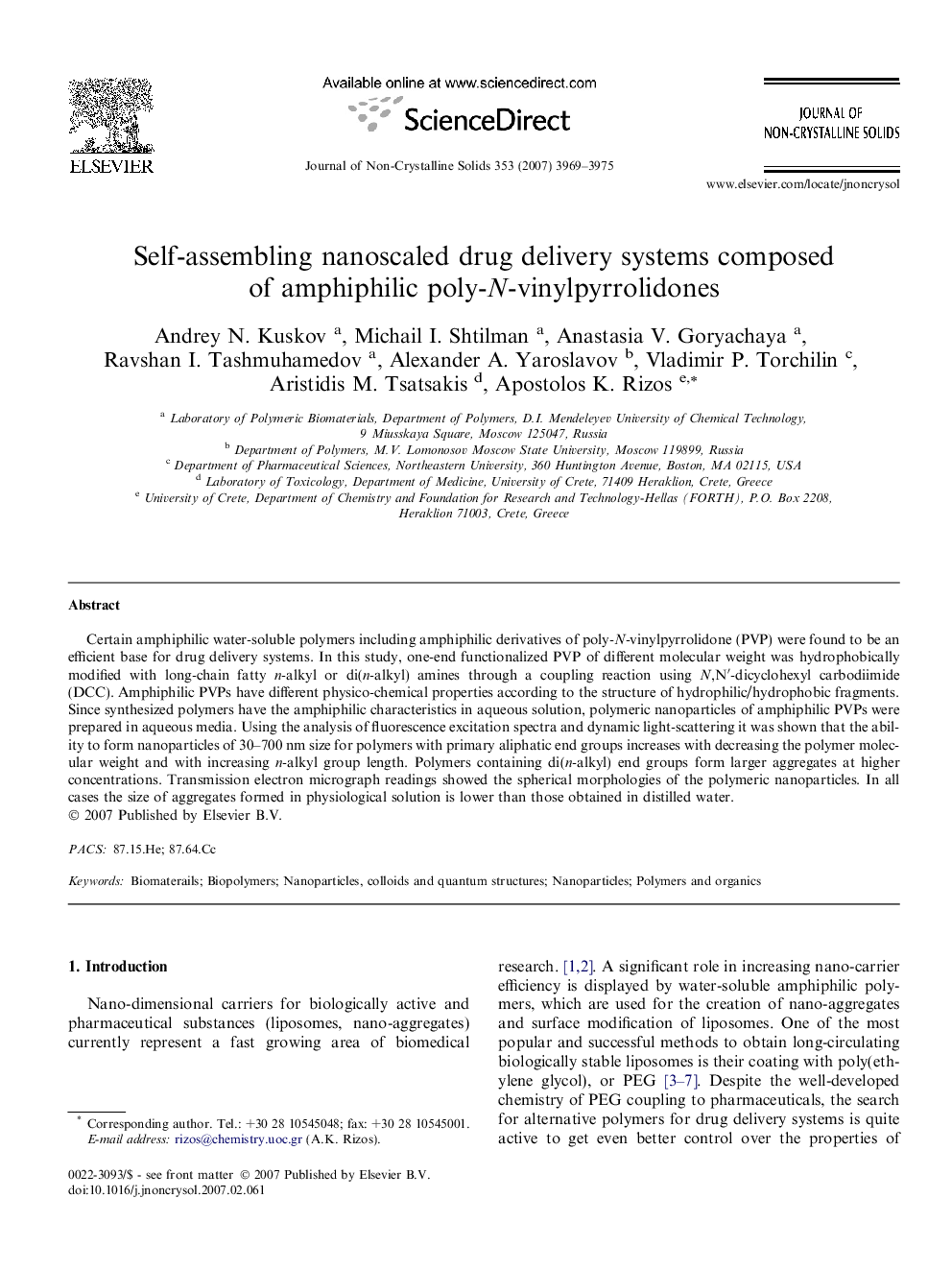| Article ID | Journal | Published Year | Pages | File Type |
|---|---|---|---|---|
| 1485146 | Journal of Non-Crystalline Solids | 2007 | 7 Pages |
Certain amphiphilic water-soluble polymers including amphiphilic derivatives of poly-N-vinylpyrrolidone (PVP) were found to be an efficient base for drug delivery systems. In this study, one-end functionalized PVP of different molecular weight was hydrophobically modified with long-chain fatty n-alkyl or di(n-alkyl) amines through a coupling reaction using N,N′-dicyclohexyl carbodiimide (DCC). Amphiphilic PVPs have different physico-chemical properties according to the structure of hydrophilic/hydrophobic fragments. Since synthesized polymers have the amphiphilic characteristics in aqueous solution, polymeric nanoparticles of amphiphilic PVPs were prepared in aqueous media. Using the analysis of fluorescence excitation spectra and dynamic light-scattering it was shown that the ability to form nanoparticles of 30–700 nm size for polymers with primary aliphatic end groups increases with decreasing the polymer molecular weight and with increasing n-alkyl group length. Polymers containing di(n-alkyl) end groups form larger aggregates at higher concentrations. Transmission electron micrograph readings showed the spherical morphologies of the polymeric nanoparticles. In all cases the size of aggregates formed in physiological solution is lower than those obtained in distilled water.
